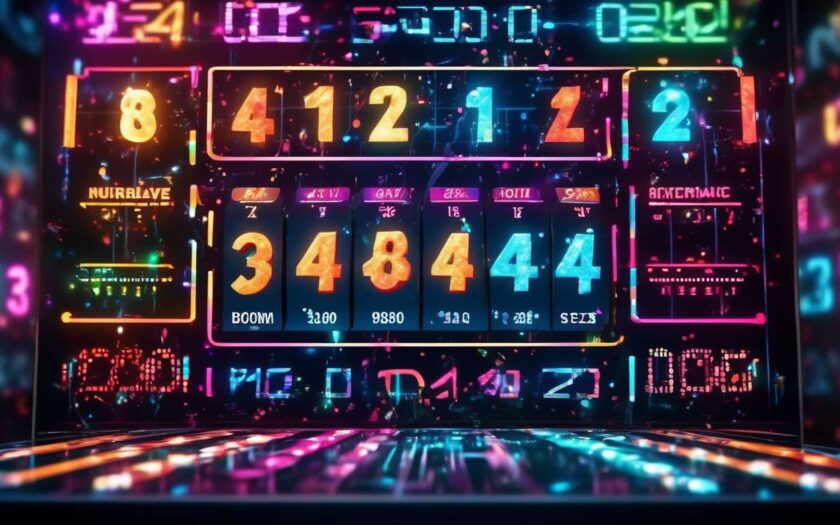Player Rating Systems in Competitive Games and Sports
In the realm of competitive games and sports, player rating systems have become an integral part of understanding and measuring performance. These systems, whether found in chess, video games, or professional sports leagues, serve as tools to:
- Quantify skill levels
- Predict outcomes
- Rank players
- Set fair matchups
They also fuel debates about who the greatest of all time might be.
Engagement with Player Ratings
As enthusiasts and analysts, we constantly engage with these ratings, scrutinizing their methodologies and the data they produce. Key questions often arise:
- How accurate are these ratings in reflecting a player’s true capabilities?
- What factors do they consider?
- What do they overlook?
Exploring Player Rating Systems
This article aims to explore the intricacies of player rating systems by examining:
- Their evolution
- Their impact on the sports and gaming industries
- The future possibilities they hold for enhancing our understanding of human competition
Through this exploration, we hope to gain a deeper insight into how these systems shape our perceptions and experiences in competitive environments.
The Need for Player Ratings
In competitive sports and games, player ratings are essential for objectively evaluating and comparing individual performances. A fair and unbiased system is crucial to embrace our shared passion for the game. This is where the Elo rating system comes into play.
Originally designed for chess, the Elo rating system has become a cornerstone in measuring players’ abilities across various sports. By utilizing data analytics, we can delve into player statistics, providing a clearer picture of their true performance levels.
As a community, our aim is to ensure accuracy and fairness in ratings, minimizing biases that can skew perceptions. Bias can creep in due to subjective opinions or incomplete data. However, with advanced data analytics, we have the tools to:
- Identify biases
- Reduce biases
By embracing these technologies, we create a system that respects and values everyone’s contribution.
Our collective goal is to foster an environment where players are measured by their skills, thereby creating a level playing field for all.
Types of Rating Systems
When exploring player rating systems, we find a variety of methods that cater to different sports and gaming contexts. Among these, the Elo rating system stands out as a popular choice. Originally designed for chess, we’ve seen it adapt across various competitive environments. It calculates ratings based on player performance and the relative strength of opponents, making it dynamic and versatile.
In today’s data-driven world, data analytics play a crucial role in developing sophisticated rating systems. By analyzing vast amounts of performance data, we can create more accurate and unbiased player evaluations. This approach ensures that our assessments reflect real-world performance rather than relying solely on subjective opinions.
However, no system is without bias. It’s crucial for us to recognize potential biases in rating systems, whether they’re inherent in the algorithms or introduced during data collection. By acknowledging these, we foster a more inclusive and fair environment for all players, enhancing our sense of community and shared purpose.
Impact of Ratings on Competition
Player ratings significantly influence the dynamics of competition, shaping strategies and decisions for both players and teams.
Elo ratings do more than just quantify skill; they guide us in understanding how we match up against our opponents. With the use of data analytics, we gain deeper insights into performance trends and potential biases within these ratings. This allows us to refine our approach and make informed decisions about training and competition.
In our community, we all seek ways to belong and excel. Ratings provide a sense of achievement and motivate us to improve. However, they can introduce bias, leading to an uneven playing field if not carefully managed.
We must remain vigilant and ensure that these systems are fair and transparent. By embracing data analytics, we can:
- Identify potential disparities.
- Address these disparities.
- Foster a competitive environment where everyone feels valued.
- Ensure equal opportunities for success.
Together, we can make competition both challenging and fair.
Challenges in Rating Accuracy
Accurately rating players is a complex task due to variations in performance, subjective judgments, and system limitations. We often find ourselves questioning the precision of systems like the Elo rating. While it provides a structured approach, it can’t capture every nuance of a player’s abilities.
Performance fluctuates, influenced by countless factors like fatigue or morale, making consistency in ratings elusive.
Our community tends to rely on data analytics to enhance accuracy, but these tools aren’t flawless. Data alone can’t fully interpret the human element of sports or gaming.
Bias, both conscious and unconscious, can seep into:
- the data we collect
- the interpretations we derive from it
It’s crucial we acknowledge these biases, as they can skew perspectives and distort player evaluations.
We all want a fair and just system that recognizes true talent. As we continue to refine these systems, embracing diverse viewpoints and scrutinizing data critically will help us improve the integrity of player ratings.
Role of Data in Rankings
Incorporating a multitude of data points allows us to craft more nuanced and accurate player rankings. By leveraging data analytics, we can dive deeper into the performance metrics that showcase a player’s true capabilities. Our shared goal is to create a ranking system that fairly recognizes talent and effort, making every player feel valued and understood.
The Elo rating system is a classic example, using historical match data to predict future performance. However, even this system isn’t immune to bias if we don’t continuously refine our data sources and methods.
Together, we can overcome these biases by ensuring that our analytics incorporate diverse datasets that reflect real-world conditions. This collective effort makes our community stronger, as everyone contributes to a more inclusive and fair ranking environment.
By remaining committed to transparency and collaboration, we ensure that our ranking systems evolve in a way that honors the integrity of the game and the players that bring it to life.
Future Trends in Rating Technology
As we look ahead, emerging technologies like machine learning and artificial intelligence promise to revolutionize how we assess player performance. Together, we can embrace these innovations to forge a more accurate and inclusive community in player ratings.
Traditional systems like the Elo rating have served us well, but they’re limited by static algorithms. By integrating advanced data analytics, we can uncover patterns missed by conventional methods.
Imagine a world where player ratings adapt in real-time, capturing every nuance and variable of gameplay. Our shared goal is to create a system that not only evaluates performance but also fosters growth and fair competition.
To achieve this, we must ensure our technologies:
- Recognize and minimize bias
- Make everyone feel valued and represented
As we innovate, let’s keep our community’s needs at the forefront. Together, we can build a future where player ratings are:
- Dynamic
- Equitable
- Reflective of true skill
This vision will unite us in our love for the game.
Bias and Fairness in Ratings
Ensuring Fairness in Player Rating Systems
When addressing the critical issue of ensuring fairness in player rating systems, it is essential to actively identify and reduce biases. The Elo rating system, widely relied upon, must serve everyone fairly. Bias can infiltrate through various means, such as:
- Historical data misrepresentation
- Unequal access to resources
Embracing Data Analytics
To uncover these biases, we need to embrace data analytics. This approach will help us work towards solutions that promote equality. By collectively scrutinizing our data analytics processes, we can:
- Spot where bias might distort a player’s true skill
- Foster a community where every player feels accurately represented
Fostering an Inclusive Community
It’s not just about numbers; it’s about fostering a community where every player feels accurately represented. We all have a role in refining these systems to ensure they’re inclusive and just.
- Make player ratings a reflection of true potential
- Acknowledge everyone’s efforts
- Create a more equitable environment
Commitment to Fairness and Transparency
Together, we can create a more equitable environment that values fairness and transparency in player evaluations. By ensuring that player ratings accurately reflect true potential, we support a community where everyone’s efforts are acknowledged.
Player Ratings in Esports vs. Sports
Comparing player ratings in esports and traditional sports reveals unique challenges and opportunities inherent in each domain.
In esports, the reliance on data analytics is significant due to the vast amount of in-game data available. This abundance of data enables the refinement of Elo rating systems, allowing for more precise evaluations of a player’s skill level.
However, this heavy reliance on data introduces potential bias, especially if there’s a lack of careful consideration regarding which metrics are prioritized.
In traditional sports, player ratings often depend more on subjective assessments, such as:
- Scouting reports
- Expert opinions
While this approach can capture the nuanced understanding of physical sports, it also poses a risk of bias, particularly if evaluators are influenced by personal preferences or external factors.
For both realms, the sense of community is vital.
Whether discussing stats in an esports forum or debating player rankings at a sports bar, the communal aspect fosters a sense of belonging.
By addressing bias and leveraging data analytics, we can strive to create fairer and more accurate rating systems in both esports and traditional sports.
Conclusion
In conclusion, player rating systems play a crucial role in both traditional sports and esports, shaping competition and influencing player recognition.
Despite challenges in accuracy and bias, advancements in technology and data analysis continue to improve these systems.
As the demand for fair and transparent rankings grows, it is essential for rating systems to evolve and adapt to ensure a level playing field for all competitors.

